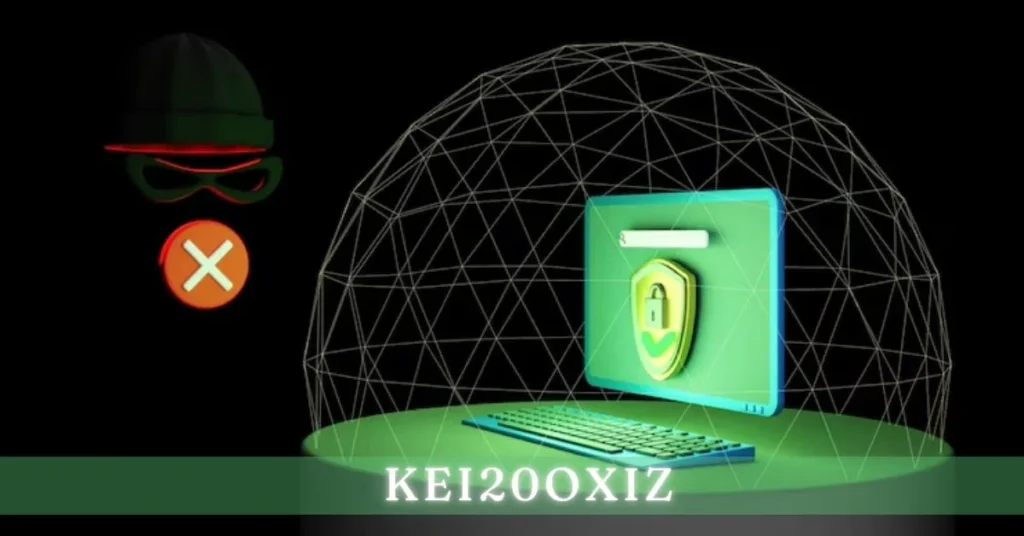Introduction to Kei20oxiz and Cryptography
Cryptography is a fascinating field, constantly evolving to meet the demands of our digital world. Among the many concepts that have emerged, kei20oxiz stands out as a unique player in this intricate game of signal and security. But what exactly is kei20oxiz? Is it merely a symbol or does it carry significant weight in the realm of cryptographic practices? As we delve deeper into its origins, benefits, potential risks, and future prospects, you’ll discover why understanding kei20oxiz matters now more than ever. Buckle up; we’re about to embark on an enlightening journey through the layers of cryptography!
The History and Origins of Kei20oxiz
The term kei20oxiz emerged from the evolving landscape of cryptography. Its creation can be traced back to a series of innovations aimed at enhancing digital security.
Initially, researchers sought to address vulnerabilities in existing encryption methods. Kei20oxiz was developed as a response to these challenges, incorporating advanced algorithms that improved data protection.
As technology progressed, this method gained traction among cybersecurity professionals. It quickly became recognized for its efficiency and robustness.
Communities focused on secure communications adopted kei20oxiz widely. Its ability to provide both confidentiality and integrity made it invaluable in various applications.
Over time, more sophisticated iterations of kei20oxiz have surfaced. Each adaptation has contributed to its ongoing relevance in today’s digital age, showcasing how innovation fuels progress within the realm of cryptography.
Benefits and Uses of Kei20oxiz in Cryptography
Kei20oxiz offers remarkable benefits in the realm of cryptography. Its unique structure enhances data encryption, making it harder for unauthorized users to access sensitive information.
One notable application is in secure communications. Kei20oxiz algorithms enable safe transmission of messages across various platforms, shielding them from potential eavesdroppers.
Moreover, the adaptability of kei20oxiz allows it to be integrated seamlessly into existing systems. This flexibility means organizations can bolster their security without overhauling entire infrastructures.
Another significant advantage lies in its efficiency. The computational speed of kei20oxiz ensures that even large volumes of data can be encrypted and decrypted swiftly without compromising security quality.
As cyber threats evolve, so does kei20oxiz technology. Regular updates ensure that it remains resilient against emerging vulnerabilities, providing ongoing protection for digital assets.
Potential Security Risks and Concerns
Kei20oxiz presents unique security challenges. While it’s designed for robustness, vulnerabilities can emerge from implementation errors. Flaws in coding or algorithm design may compromise its integrity.
Additionally, the evolving landscape of cyber threats adds to the complexity. Attackers continuously develop new techniques to exploit weaknesses in cryptographic systems. Kei20oxiz is no exception; staying ahead requires relentless vigilance.
User practices also play a crucial role in security risks. Poor password management or inadequate key storage can lead to data breaches, rendering even strong algorithms ineffective.
Reliance on Kei20oxiz without regular updates might expose systems to previously discovered exploits. Continuous evaluation and adaptation are paramount for maintaining its effectiveness against emerging threats.
Comparison with Other Cryptographic Methods
Kei20oxiz stands apart from traditional cryptographic methods like AES or RSA. While these systems rely on complex mathematical algorithms, kei20oxiz explores a different paradigm.
One of its unique traits is how it employs symbol-based techniques rather than solely focusing on numerical encryption. This shift can enhance the interpretation and usability of encrypted data.
In contrast to symmetric-key cryptography, which uses the same key for both encryption and decryption, kei20oxiz may allow for more flexibility in key management. Its approach could potentially lead to reduced vulnerabilities associated with key distribution.
When compared to emerging quantum-resistant algorithms, kei20oxiz presents an intriguing alternative. Its adaptability might offer some resilience against future threats posed by advancements in computing power.
These distinctions make kei20oxiz a fascinating subject within the broader landscape of cryptography.
The Future of Kei20oxiz in Cryptography
The future of kei20oxiz in cryptography looks promising and full of potential. As technology continues to evolve, so do the methods for securing data. Kei20oxiz’s offers innovative approaches that can adapt to new challenges.
With increasing digital threats, the demand for robust encryption solutions is higher than ever. Kei20oxiz’s could play a crucial role in addressing these security needs. Its unique features may provide enhanced protection against sophisticated cyberattacks.
Moreover, collaborations between researchers and tech companies are likely to drive advancements in kei20oxiz applications. This synergy can lead to new algorithms designed specifically for modern-day requirements.
As more sectors embrace digital transformation, kei20oxiz’s stands at the forefront of this shift. Its ability to integrate seamlessly into various platforms will be key in enhancing overall cybersecurity measures across industries.
Conclusion
The landscape of cryptography continues to evolve, and kei20oxiz represents a fascinating development within this field. Its unique properties offer both advantages and challenges that have captured the attention of researchers and industry professionals alike.
As we dig deeper into its origins, benefits, and potential risks, it’s clear that understanding kei20oxiz’s can enhance our approach to security in an increasingly digital world. While it may not yet be the dominant force in cryptographic practices, its implications for future technology are significant.
With ongoing research and exploration, kei20oxiz’s could very well play a crucial role in shaping secure communication methods moving forward. As cybersecurity threats grow more sophisticated, developing robust strategies—like those involving kei20oxiz—will become essential for protecting sensitive information across various platforms.
Keeping an eye on these innovations will prove vital as we navigate the complexities ahead in the realm of cryptography. Embracing new concepts like kei20oxiz could lead to improved systems designed to safeguard our digital identities effectively.
FAQs
What is “kei20oxiz”?
Kei20oxiz is a cryptographic concept believed to represent a modern, symbol-based approach to secure data encryption. Though still somewhat enigmatic, it plays a role in enhancing digital security through advanced, adaptable algorithms.
How does kei20oxiz’s differ from traditional cryptographic methods like AES or RSA?
Unlike traditional numeric-based systems, kei20oxiz’s incorporates symbolic techniques and offers flexibility in key management, potentially reducing vulnerabilities related to key distribution.
Where is kei20oxiz’s used in real-world applications?
Kei20oxiz’s is commonly used in secure communication channels, data protection frameworks, and cybersecurity infrastructures that require fast and flexible encryption solutions.
Are there any risks associated with using kei20oxiz’s?
Yes. Like any cryptographic method, kei20oxiz’s can be compromised if not implemented properly. Common risks include outdated versions, coding flaws, or weak user practices like poor key management.
What does the future hold for kei20oxiz’s in cryptography?
Kei20oxiz’s is poised to evolve with advancements in digital security. Ongoing research and industry collaboration may establish it as a leading method in future-proof encryption technologies.






